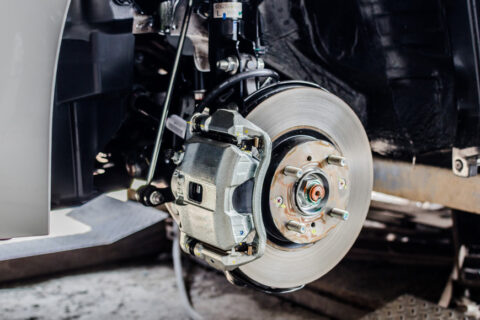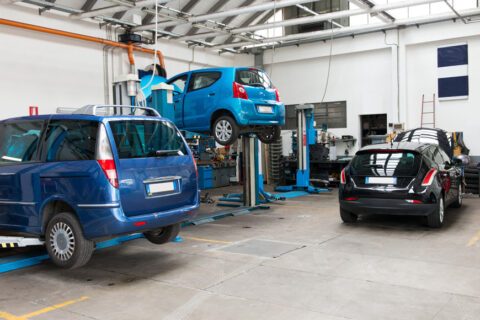Your vehicle’s brake life depends on a variety of driving conditions. With that in mind, most vehicles give you both visual and audible warning signs when your vehicle needs new brakes.
First, look between your wheel spokes and see if your brake pads are visible. You may be able to see the outside pad that is pressed against the rotor. Once you’ve located the brake pad, try to get a gauge for how thick the pad is. If you can clearly tell that there is over 1/4 of an inch left on the pad, the brake pads are likely fine. If the pad is clearly under ¼ of an inch, it’s likely time for brake service and you should make an appointment with a mechanic soon.
Perhaps the clearest sign that it’s time for brake service is squeaky brakes. You’ve likely heard this sound before – when a vehicle comes to a stop there is a clear audible squeak that sounds like metal scratching metal. This sounds isn’t your actual rotors or other vital brake component, but a small metal shim that is designed to give you a warning indication when it is time for new brakes.
While the above mentioned squeaking sound is usually a clear sign that brake service is needed, there is an exception. If your car has been parked in wet or very humid conditions, rust tends to form on the brake rotors. This does not compromise the brakes, but it does cause a very similar squeak when you first begin to drive. After a few miles and number of times braking, this thin rust layer should wear off and the squeak should be gone. If the sound remains, it’s likely the indicator shim causing the squeaking and it would be wise to schedule brake service as soon as possible.


